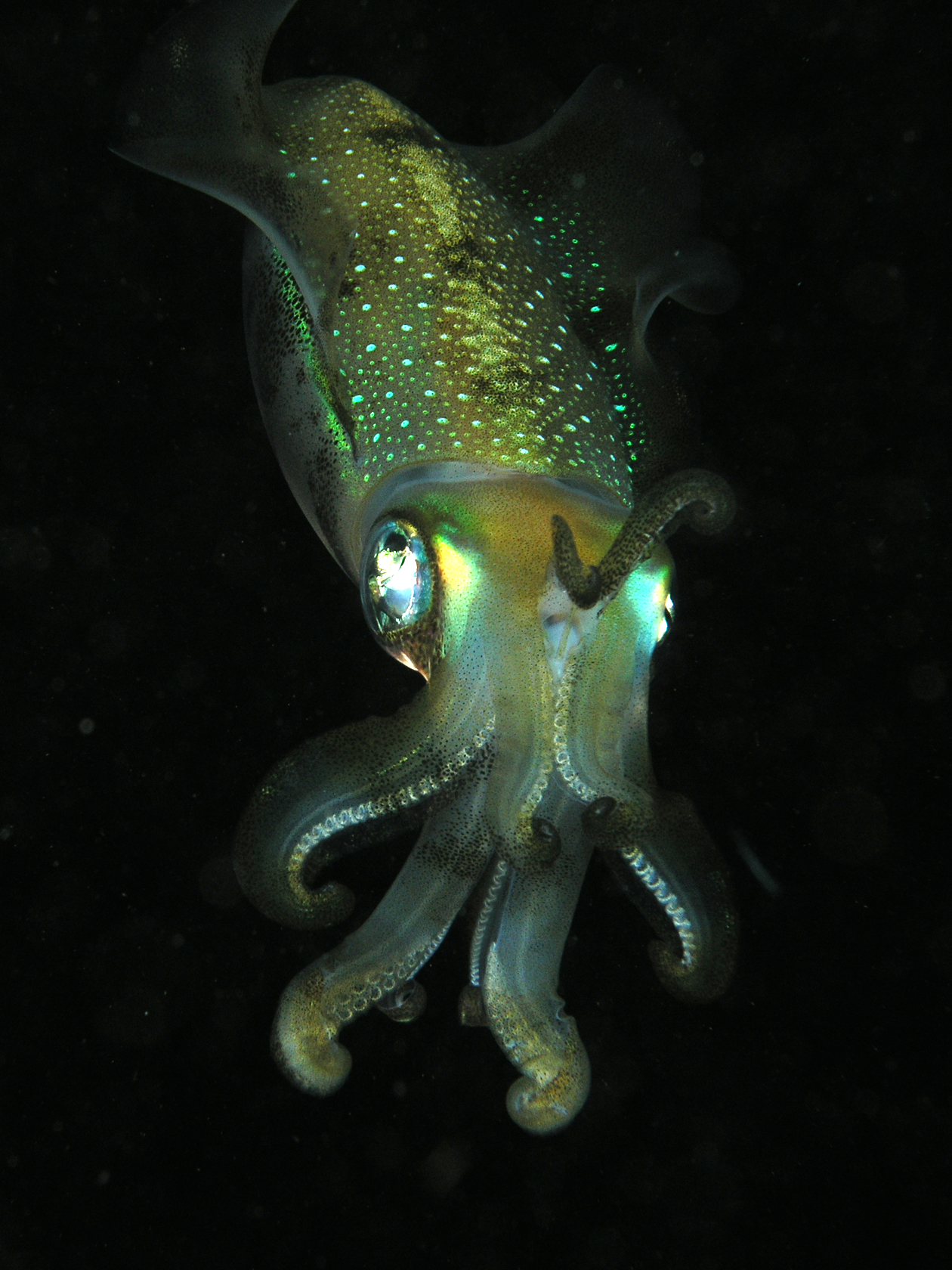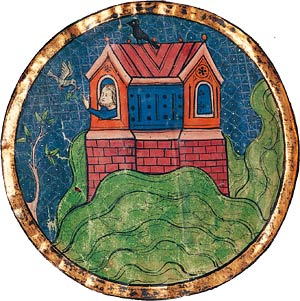|
Miscellanea Malacologica
''Miscellanea Malacologica'' is a peer-reviewed scientific journal covering malacology, specifically papers on the taxonomy, nomenclature, and zoogeography of mollusks. The journal is published by Marien Faber (Duivendrecht, the Netherlands) and was established in 2004. The name of the journal is Latin for "malacological miscellany". The journal is a large format publication with color illustrations. It is published on an irregular basis: from 2004 to 2012 it had from two to five issues per year. The journal is abstracted and indexed in ''The Zoological Record''. References External links * {{Official website, http://www.mollus.nl Listof type specimens of taxa In biology, a taxon (back-formation from ''taxonomy''; : taxa) is a group of one or more populations of an organism or organisms seen by taxonomists to form a unit. Although neither is required, a taxon is usually known by a particular name and ... described in the journal Malacology journals Academic journals ... [...More Info...] [...Related Items...] OR: [Wikipedia] [Google] [Baidu] |
Malacology
Malacology, from Ancient Greek μαλακός (''malakós''), meaning "soft", and λόγος (''lógos''), meaning "study", is the branch of invertebrate zoology that deals with the study of the Mollusca (molluscs or mollusks), the second-largest phylum of animals in terms of described species after the arthropods. Mollusks include snails and slugs, clams, and cephalopod, cephalopods, along with numerous other kinds, many of which have mollusc shell, shells. Fields within malacological research include Taxonomy (biology), taxonomy, ecology and evolution. Several subdivisions of malacology exist, including conchology, devoted to the study of mollusk shells, and teuthology, the study of cephalopods such as octopus, squid, and cuttlefish. Applied malacology studies medical, veterinary, and agricultural applications, for example the study of mollusks as vectors of schistosomiasis and other diseases. Archaeology employs malacology to understand the evolution of the climate, the biota ... [...More Info...] [...Related Items...] OR: [Wikipedia] [Google] [Baidu] |
Latin Language
Latin ( or ) is a classical language belonging to the Italic languages, Italic branch of the Indo-European languages. Latin was originally spoken by the Latins (Italic tribe), Latins in Latium (now known as Lazio), the lower Tiber area around Rome, Italy. Through the expansion of the Roman Republic, it became the dominant language in the Italian Peninsula and subsequently throughout the Roman Empire. It has greatly influenced many languages, Latin influence in English, including English, having contributed List of Latin words with English derivatives, many words to the English lexicon, particularly after the Christianity in Anglo-Saxon England, Christianization of the Anglo-Saxons and the Norman Conquest. Latin Root (linguistics), roots appear frequently in the technical vocabulary used by fields such as theology, List of Latin and Greek words commonly used in systematic names, the sciences, List of medical roots, suffixes and prefixes, medicine, and List of Latin legal terms ... [...More Info...] [...Related Items...] OR: [Wikipedia] [Google] [Baidu] |
Malacology Journals
Malacology, from Ancient Greek μαλακός (''malakós''), meaning "soft", and λόγος (''lógos''), meaning "study", is the branch of invertebrate zoology that deals with the study of the Mollusca (molluscs or mollusks), the second-largest phylum of animals in terms of described species after the arthropods. Mollusks include snails and slugs, clams, and cephalopods, along with numerous other kinds, many of which have shells. Fields within malacological research include taxonomy, ecology and evolution. Several subdivisions of malacology exist, including conchology, devoted to the study of mollusk shells, and teuthology, the study of cephalopods such as octopus, squid, and cuttlefish. Applied malacology studies medical, veterinary, and agricultural applications, for example the study of mollusks as vectors of schistosomiasis and other diseases. Archaeology employs malacology to understand the evolution of the climate, the biota of the area, and the usage of the site. Zool ... [...More Info...] [...Related Items...] OR: [Wikipedia] [Google] [Baidu] |
Taxon
In biology, a taxon (back-formation from ''taxonomy''; : taxa) is a group of one or more populations of an organism or organisms seen by taxonomists to form a unit. Although neither is required, a taxon is usually known by a particular name and given a particular ranking, especially if and when it is accepted or becomes established. It is very common, however, for taxonomists to remain at odds over what belongs to a taxon and the criteria used for inclusion, especially in the context of rank-based (" Linnaean") nomenclature (much less so under phylogenetic nomenclature). If a taxon is given a formal scientific name, its use is then governed by one of the nomenclature codes specifying which scientific name is correct for a particular grouping. Initial attempts at classifying and ordering organisms (plants and animals) were presumably set forth in prehistoric times by hunter-gatherers, as suggested by the fairly sophisticated folk taxonomies. Much later, Aristotle, and later st ... [...More Info...] [...Related Items...] OR: [Wikipedia] [Google] [Baidu] |
Type (biology)
In biology, a type is a particular specimen (or in some cases a group of specimens) of an organism to which the scientific name of that organism is formally associated. In other words, a type is an example that serves to anchor or centralizes the defining features of that particular taxon. In older usage (pre-1900 in botany), a type was a taxon rather than a specimen. A taxon is a scientifically named grouping of organisms with other like organisms, a set that includes some organisms and excludes others, based on a detailed published description (for example a species description) and on the provision of type material, which is usually available to scientists for examination in a major museum research collection, or similar institution. Type specimen According to a precise set of rules laid down in the International Code of Zoological Nomenclature (ICZN) and the ''International Code of Nomenclature for algae, fungi, and plants'' (ICN), the scientific name of every taxon is ... [...More Info...] [...Related Items...] OR: [Wikipedia] [Google] [Baidu] |
Thomson Reuters
Thomson Reuters Corporation ( ) is a Canadian multinational corporation, multinational content-driven technology Conglomerate (company), conglomerate. The company was founded in Toronto, Ontario, Canada, and maintains its headquarters at 19 Duncan Street there. Thomson Reuters was created by the Thomson Corporation's purchase of the British company Reuters Group on 17 April 2008. It is majority-owned by the Woodbridge Company, a holding company for the Family tree of Thomson family, Thomson family of Canada. History Thomson Corporation The forerunner of the Thomson company was founded in 1934 by Roy Thomson, 1st Baron Thomson of Fleet, Roy Thomson in Ontario as the publisher of ''The Timmins Daily Press''. In 1953, Thomson acquired the ''The Scotsman, Scotsman'' newspaper and moved to Scotland the following year. He consolidated his media position in Scotland in 1957, when he won the government-granted monopoly, franchise for Scottish Television. In 1959, he bought the ... [...More Info...] [...Related Items...] OR: [Wikipedia] [Google] [Baidu] |
The Zoological Record
''The Zoological Record'' (''ZR'') is an electronic index of zoological literature that also serves as the unofficial register of scientific names in zoology. It was started as a print publication in 1864 by the Zoological Society of London, as ''The Record of Zoological Literature'', and changed its name to the ''Zoological Record'' in 1870. From 1980 to 2004, the ZR was published by BIOSIS, from 2004 to 2016 it was published by Thomson Reuters, and from 2016 to the present it has been published by Clarivate Analytics. The print version ceased in 2016, but the publication continues as an electronic index. History In 1864, Albert Günther and a group of zoologists associated with the British Museum and the Zoological Society came together to begin work on ''The Record of Zoological Literature'', the first volume of which was published in 1865 by John Van Voorst, covering zoological literature that had been published in 1864. This work was intended to be an English languag ... [...More Info...] [...Related Items...] OR: [Wikipedia] [Google] [Baidu] |
Miscellany
A miscellany (, ) is a collection of various pieces of writing by different authors. Meaning a mixture, medley, or assortment, a miscellany can include pieces on many subjects and in a variety of different forms. In contrast to anthologies, whose aim is to give a ''selective'' and '' canonical'' view of literature, miscellanies were produced for the entertainment of a contemporary audience and so instead emphasise ''collectiveness'' and ''popularity''. Laura Mandell and Rita Raley state: Manuscript miscellanies are important in the Middle Ages, and are the sources for most surviving shorter medieval vernacular poetry. Medieval miscellanies often include completely different types of text, mixing poetry with legal documents, recipes, music, medical and devotional literature and other types of text, and in medieval contexts a mixture of types of text is often taken as a necessary condition for describing a manuscript as a miscellany. They may have been written as a collection ... [...More Info...] [...Related Items...] OR: [Wikipedia] [Google] [Baidu] |
Duivendrecht
Duivendrecht () is a village in the Dutch province of North Holland. It is a part of the municipality of Ouder-Amstel, and lies about 6 km southeast of Amsterdam’s city centre. It is a suburb of Amsterdam. History The village was first mentioned in 1308 as Doevendrecht, and means "ferry of Doeve (person)." Duivendrecht started to developed in the 19th century and has become encircled by Amsterdam, Diemen and the Bijlmermeer. The Catholic St Urbanus Church is a single aisled cruciform church with a double tower. It was built between 1877 and 1878 as a replacement of the 1840 church. The local Duivendrecht railway station is a major interchange point on the Dutch railway network. It opened in 1993 and is on the Amsterdam to Arnhem railway line, the Weesp to Leiden line as well as the Amsterdam Metro The Amsterdam Metro () is a rapid transit system serving Amsterdam, Netherlands, and extending to the surrounding List of municipalities of the Netherlands, municipalities ... [...More Info...] [...Related Items...] OR: [Wikipedia] [Google] [Baidu] |
Peer Review
Peer review is the evaluation of work by one or more people with similar competencies as the producers of the work (:wiktionary:peer#Etymology 2, peers). It functions as a form of self-regulation by qualified members of a profession within the relevant Field of study, field. Peer review methods are used to maintain quality standards, improve performance, and provide credibility. In academia, scholarly peer review is often used to determine an academic paper's suitability for publication. Peer review can be categorized by the type and by the field or profession in which the activity occurs, e.g., #Medical, medical peer review. It can also be used as a teaching tool to help students improve writing assignments. Henry Oldenburg (1619–1677) was a German-born British philosopher who is seen as the 'father' of modern scientific peer review. It developed over the following centuries with, for example, the journal ''Nature (journal), Nature'' making it standard practice in 1973. The t ... [...More Info...] [...Related Items...] OR: [Wikipedia] [Google] [Baidu] |
Mollusk
Mollusca is a phylum of protostomic invertebrate animals, whose members are known as molluscs or mollusks (). Around 76,000 extant species of molluscs are recognized, making it the second-largest animal phylum after Arthropoda. The number of additional fossil species is estimated between 60,000 and 100,000, and the proportion of undescribed species is very high. Many taxa remain poorly studied. Molluscs are the largest marine phylum, comprising about 23% of all the named marine organisms. They are highly diverse, not just in size and anatomical structure, but also in behaviour and habitat, as numerous groups are freshwater and even terrestrial species. The phylum is typically divided into 7 or 8 taxonomic classes, of which two are entirely extinct. Cephalopod molluscs, such as squid, cuttlefish, and octopuses, are among the most neurologically advanced of all invertebrates—and either the giant squid or the colossal squid is the largest known extant i ... [...More Info...] [...Related Items...] OR: [Wikipedia] [Google] [Baidu] |
Zoogeography
Zoogeography is the branch of the science of biogeography that is concerned with geographic distribution (present and past) of animal species. As a multifaceted field of study, zoogeography incorporates methods of molecular biology, genetics, morphology, phylogenetics, and Geographic Information Systems (GIS) to delineate evolutionary events within defined regions of study around the globe. As proposed by Alfred Russel Wallace, known as the father of zoogeography, phylogenetic affinities can be quantified among zoogeographic regions, further elucidating the phenomena surrounding geographic distributions of organisms and explaining evolutionary relationships of taxa. Advancements in molecular biology and theory of evolution within zoological research has unraveled questions concerning speciation events and has expanded phylogenic relationships amongst taxa. Integration of phylogenetics with GIS provides a means for communicating evolutionary origins through cartographic design. ... [...More Info...] [...Related Items...] OR: [Wikipedia] [Google] [Baidu] |








